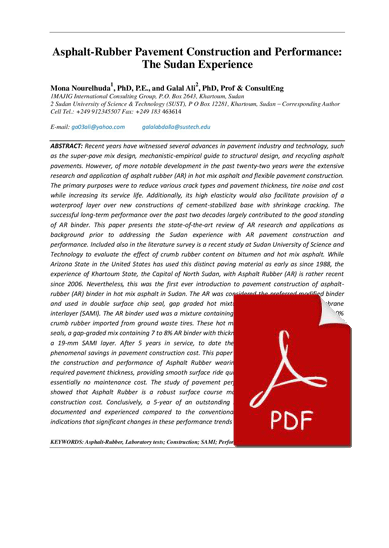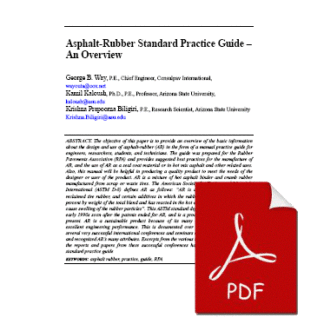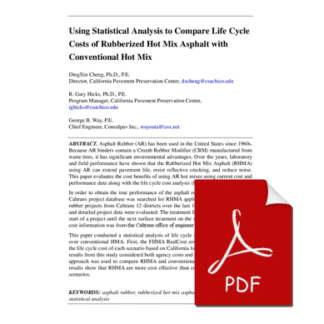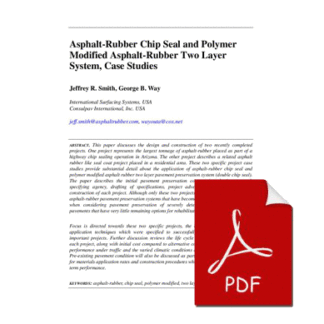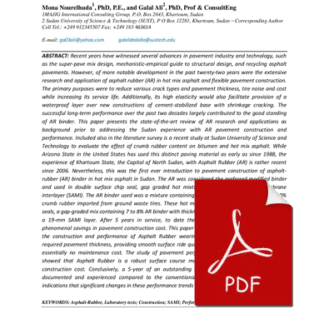Description
Recent years have witnessed several advances in pavement industry and technology, such as the super-pave mix design, mechanistic-empirical guide to structural design, and recycling asphalt pavements. However, of more notable development in the past twenty-two years were the extensive research and application of asphalt rubber (AR) in hot mix asphalt and flexible pavement construction. The primary purposes were to reduce various crack types and pavement thickness, tire noise and cost while increasing its service life. Additionally, its high elasticity would also facilitate provision of a waterproof layer over new constructions of cement-stabilized base with shrinkage cracking. The successful long-term performance over the past two decades largely contributed to the good standing of AR binder. This paper presents the state-of-the-art review of AR research and applications as background prior to addressing the Sudan experience with AR pavement construction and performance. Included also in the literature survey is a recent study at Sudan University of Science and Technology to evaluate the effect of crumb rubber content on bitumen and hot mix asphalt. While Arizona State in the United States has used this distinct paving material as early as since 1988, the experience of Khartoum State, the Capital of North Sudan, with Asphalt Rubber (AR) is rather recent since 2006. Nevertheless, this was the first ever introduction to pavement construction of asphaltrubber (AR) binder in hot mix asphalt in Sudan. The AR was considered the preferred modified binder and used in double surface chip seal, gap graded hot mixture, and stress absorbing membrane interlayer (SAMI). The AR binder used was a mixture containing 80 to 83% hot asphalt and 17 to 20% crumb rubber imported from ground waste tires. These hot mixes were used in double surface chip seals, a gap-graded mix containing 7 to 8% AR binder with thickness varying from 45 mm to 50 mm and a 19-mm SAMI layer. After 5 years in service, to date the field performance is excellent with phenomenal savings in pavement construction cost. This paper addresses and reports with discussion the construction and performance of Asphalt Rubber wearing course regarding reduction in the required pavement thickness, providing smooth surface ride quality of very good skid resistance, with essentially no maintenance cost. The study of pavement performance during the five-year period showed that Asphalt Rubber is a robust surface course material, with a noteworthy saving in construction cost. Conclusively, a 5-year of an outstanding AR performance has been observed, documented and experienced compared to the conventional ones. Furthermore, there were no indications that significant changes in these performance trends would be expected.

